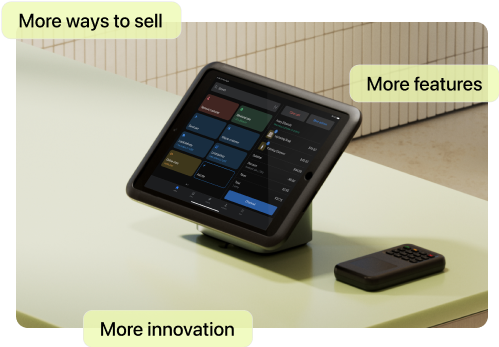Consumers often look for products that reflect their individuality. Around 36% of shoppers prefer customized products, and nearly half will wait for items tailored to them. Even better, many happily pay a premium for personalization.
Selling customized products can also help your business stand out. Whether you're letting customers add names to necklaces or choose their phone case colors, customization gives them a sense of ownership.
It's also an easy upsell for your ecommerce businesses. By letting shoppers tweak designs, add personal touches, or select features, you create a premium customer experience that can increase average order value and keep clients coming back. Ahead, learn how to create customizable products, explore the benefits to your business, and review examples from other brands.
What is product customization?
Customers use online product customizations to tailor items to their personal needs or style. Customizations allow them to choose colors, swap design elements, add or remove product features, or include a name, logo, or monogram.
"Some people think of customizable products as putting a name or a picture on a t-shirt—but it can go well beyond that," says Dans Rozentāls, customer success team manager at Printful, which helps businesses to design and sell custom products online with print-on-demand dropshipping.
"We encourage business owners to think about offering customization that's unique for a specific fan base or customer need—making a real connection."
When done right, Dans says, customized products can help businesses "become flexible, agile, and able to try new things. That's where we see a lot of business owners have the biggest opportunity to grow."
How to create customizable products in 7 steps
Adding customizable products to your Shopify store needn't be complex. With the right tools, giving your customers personalized options is easy.
Here's how to create customizable products in Shopify in seven simple steps:
1. Choose a product to customize
Start with a product that benefits from personalization, for example, apparel, mugs, or phone cases. Before launching your customized products, it's helpful to clearly define your product development process.
Use your existing product or add a new one via Products > Add product.

2. Enable variants or customization fields
Use Shopify's built-in variants to allow customers to choose simple variations such as size, color, and materials.

3. Use a product customization app
To facilitate advanced customizations like adding names, dates, text, or uploaded images, you'll need a product customization app.
Here are three popular apps Shopify business owners use to create sophisticated customizations:
- Customily: Ideal for gifts and print-on-demand products, Customily lets customers add text, clip art, or images. It offers real-time product previews so shoppers can instantly visualize their final product.
- Teeinblue Product Personalizer: Robust yet easy to use, this app lets customers build unlimited custom products. It's perfect for apparel and accessories businesses, offering dynamic design previews and advanced conditional logic.
- Zepto Product Personalizer: A highly flexible option with real-time previews, customizable fonts, and layered images, Zepto provides customers with an intuitive personalization experience.

4. Add conditional logic
Some apps support conditional logic, which displays or hides options based on earlier selections. For example, if a customer chooses "engraving," a text box appears. If not, the box stays hidden. Conditional logic keeps product pages clean and easy to navigate.

5. Preview and test your product
Before you launch, visit your storefront and go through the customization process just as a customer would. Try every input, including text fields, image uploads, and dropdowns.
To ensure a smooth customer journey, double-check that customization details appear correctly in the cart, checkout, and order confirmation.
6. Optimize the product page
Make it easy for customers to personalize your products. Clearly label each option, provide helpful instructions in product descriptions, and provide example images or mockups to demonstrate final products. A smooth, intuitive experience reduces friction and boosts conversions.
7. Set up a fulfillment process
Make sure your fulfillment team or print-on-demand partner receives the customization details they need with each order. Many product personalization apps automatically pass this info through order notes or a separate metadata field. Test a few sample orders to ensure nothing gets lost in the process.
Benefits of ecommerce product customization
- Potential for higher profit margins
- Increased brand loyalty
- Competitive edge
- Reduced inventory risk
- Speed and agility
- Deeper understanding of customers
The top benefits of product customization include:
Potential for higher profit margins
Customization opens new product opportunities. A generic item that everyone owns can be rather ho-hum. But personalization makes it special, one of a kind. That's something many customers will pay a premium price for, boosting sales.
For example, a plain t-shirt can sell for as little as a few dollars, Dans notes. But if the buyer can select their collar style, sleeve length, and color, and then print whatever design they'd like—suddenly that $5 t-shirt is worth a lot more.
"I've seen customers selling print-on-demand t-shirts for up to $80," Dans says. "It's about how you market it, the community you're marketing to, and the value that your brand brings."
Increased brand loyalty
When customers can get exactly what they need (whether that's sneakers in a half size with two-tone laces or their baby's face on a pair of socks), it can increase brand loyalty, potentially leading to repeat orders and loyal customers.
"You feel the brand actually knows what you're about and wants to give you exactly what you want," Dans says. "You'll come back to them again and again and tell others about it because they understand you."
Competitive edge
Personalization provides a clear differentiator, turning standard items into unique product offerings that customers won't find anywhere else. If customers can select the color of their notebook, and the wire binding, and the page format, and the monogram foil color, then they're not getting a generic notebook—they're getting something special.
Reduced inventory risk
Let's say purple isn't resonating with your customers this season. If you produced in bulk, you may have a pile of purple baseball caps in your inventory. But if you produce on demand, then you only make purple caps for customers who have already ordered them.
While the per-unit cost of custom-made goods is typically higher than those made in bulk, on-demand production eliminates inventory expenses. You can even stop managing inventory altogether by using a print-on-demand partner to produce and ship your products, or by selling products from other brands through supplier networks. You can use the time you save to expand your product line, create new merchandise, or target a new audience.
"Sometimes when people look at an on-demand model compared to bulk, they look at the product cost and say, 'That's expensive,'" Dans says. "But for bulk setup, you have employee costs, utilities, warehousing, equipment and repairs, and more. Managing inventory can get really expensive."
Speed and agility
On-demand production facilitates agility. Audiences have different needs and interests, and letting customers customize products helps you quickly reach different segments and respond to trends.
"You can experiment with options for different communities, and if it works to boost sales, great; if not, you test something else," Dans says. "That's where a lot of business owners have a lot of opportunity to grow. It's not sticking with the things that worked three years ago—it's being agile and testing new things constantly."
When you're nimble, you can capitalize on trends—something that isn't possible with bulk ordering, which happens months in advance.
"There's a huge opportunity cost to missed trends, whether it's on social media or in fashion," Dans says. "If you haven't ordered in June, you might be too late for the Christmas shopping season. Whereas with on demand, you can have a design up and running in literally five minutes."
🌟 Looking for popular things to sell in 2025? Check out these trending products. They could help grow your sales. Snail slime, anyone?
Deeper understanding of customers
As customers tinker with your product configurator to make their selections, every decision offers insight into their individual preferences.
For example, if most customers upgrade the drawer pulls on your custom side tables, you might make them the default option—or you might consider charging more. Conversely, if most customers consider personalizing your gold bracelets but skip it before checking out, your price may be too high.
Types of customizable products
If you're thinking of selling customizable products in your online store, here are a few popular categories that work well:
Print-on-demand apparel
T-shirts, hoodies, and hats are classics for a reason. Let customers add their names, favorite quotes, or uploaded designs. It's easy to offer these options with print-on-demand services that handle the printing and shipping for you.
Jewelry
Personalized jewelry is always in demand—think initials on necklaces, engraved rings, or birthstone charms. With a few simple text fields or dropdowns, customers can create meaningful, one-of-a-kind pieces.

Pet products
Pet parents love buying special items for their furry friends. From name-engraved collars to custom pet beds, photo frames, and bowls, letting customers personalize their pet products demonstrates care.

Stationery and paper goods
Notebooks, planners, and cards are perfect for customization. Whether it's a name on the cover or a personalized message inside, these small touches turn everyday items into thoughtful gifts.

Tech accessories
Phone cases, laptop sleeves, and AirPod covers are all popular items to customize. Customers might want to add initials or photos, or choose colors and patterns that match their style.

Examples of product customization
Ecommerce product customization can help your business grow, reach new customers, and turn buyers into loyal fans.
Here are some Shopify merchants who are making it work:
KaiKini

Everybody is different, which makes shopping for women's swimwear a challenge—especially when online shopping. That's why Taryn Rodighiero founded KaiKini, a Hawaii-based swimwear company that creates a truly personalized experience.
On KaiKini's store, a user-friendly interface lets customers build suits by entering their measurements and preferences (like "full," "cheeky," or "teeny" coverage for bikini bottoms). They also select a print—or two, if the suit style is reversible. A virtual concierge service walks them through the process. This process turns customers into designers and helps them find the perfect fit and style.
MyCustomCandy

In 2013, marketer Sarah Hannington wanted to send custom-printed Valentine-style candy hearts to a client. Through frantic Googling, she eventually persuaded a company to do it—but they had no ecommerce presence.
Sarah saw an opportunity and created MyCustomCandy, which prints personalized candy hearts and mints, customized candy bags and boxes, and direct-to-recipient candy mailers.
Customers can use their own text and images to create personalized items for wedding candy tables, corporate promotions, and marketing campaigns. MyCustomCandy's long customer list includes Microsoft, J. Crew, Nintendo, Toyota, Lady Gaga, and Kim Kardashian.
Appointed

Appointed sells crisp and minimalist planners, notebooks, journals, calendars, and stationery—with as much or as little customization as clients want. When customers purchase from Appointed's standard collection, they can use the product customizer to choose between several colors of bookcloth (bookbinding fabric) covers and monogramming in either serif or sans-serif font.
Brands seeking further options can browse Appointed's customizable collection to choose from bestselling items and pick colors, add monograms or logos, and select from lined, grid, or blank interior paper.
Product customization FAQ
What are the drawbacks of product customization?
You may need complex operations to produce and sell customized goods. Custom products also require longer lead times than standard items and may require more back-and-forth to ensure customer satisfaction. It's also important to remember that customers usually cannot return custom products.
How do you offer product customization on ecommerce stores?
Use product-customizing software and print-on-demand apps to offer customizable products on your ecommerce store. The Shopify App Store includes hundreds of apps dedicated to product variants, customized and personalized products, custom file uploads, and print on demand.
What is an example of a customized product?
Popular product customization examples include print-on-demand t-shirts, custom furniture, monogrammed leather goods, and personalized jewelry.








